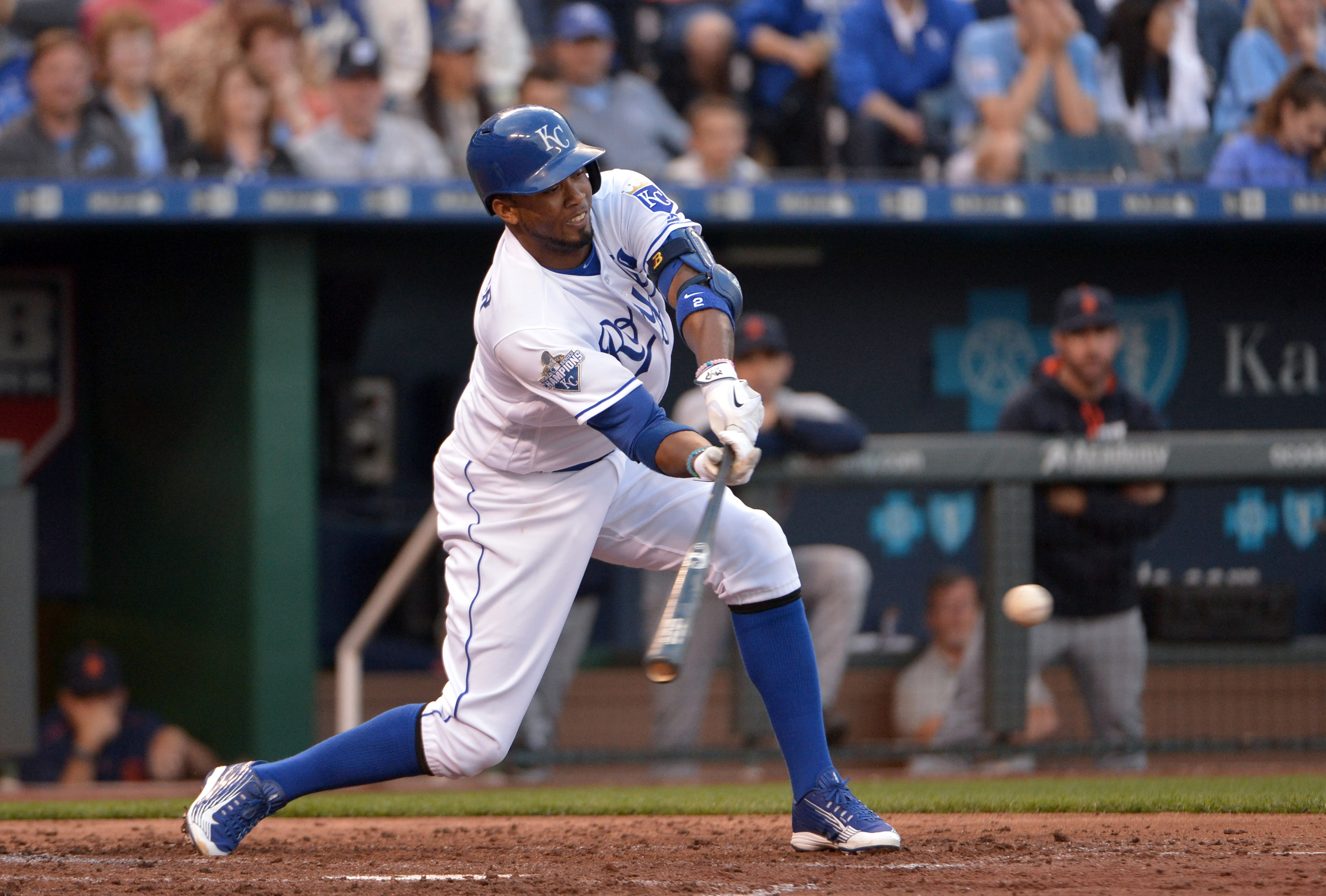During two seasons that each ended with a World Series appearances, the Royals’ offense has probably not received enough credit. Now, after a somewhat disappointing .500 season, I wonder if they’re getting enough blame.
The narrative over the last two seasons was that the Royals succeeded in spite of their offense, depending on an airtight defense and lockdown bullpen to prevent runs, thus allowing whatever the offense could manage to contribute to be converted to a win. And I would agree that, especially in 2014, the defense and bullpen deserved most of the credit for the team’s success.
But that storyline ignores that the Royals had essentially a league-average offense in 2014 and an above-average offense in 2015. We all know that the Royals, even in the best of times, are seemingly allergic to walks. But by making better and more frequent contact the previous two seasons, the Royals collected enough hits to make a respectable on-base percentage. And despite the team’s lack of home run power, the Royals piled up the doubles and triples in Kauffman Stadium’s spacious outfield. And of course, the various speedsters on the roster allowed the Royals to steal more bases and take more extra bases, offsetting the low slugging percentage while not giving away outs on the bases.
In 2014, the Royals ranked ninth in the American League in on-base percentage, just .002 under the league average of .316. Their slugging percentage of .376 was 11th in the league, .014 under the league average of .390. Yet the team finished ninth in the league in runs scored with 651, 26 below league average. But in Baseball Prospectus’ Baserunning Runs stat, the Royals were first in all of baseball with 18.5, more than twice as high as the second-place team.
And in 2015, the Royals really did have a good offense. They were seventh in OBP, .004 above average. They were eighth in slugging, exactly at league average. And they ranked sixth in runs scored, 14 above league average. They fell to ninth in BRR, however, but with the increases elsewhere they didn’t need it as much. I suppose we could quibble about the definition of “good,” but they were above average in the important categories. Not great, but certainly good enough to win games.
But this year, all those numbers dropped. The Royals fell to 13th in the league in on-base percentage, nine points below average. Despite hitting more home runs in 2016 than they did in 2015, the Royals fell to 14th in the league in slugging percentage, 23 points below average. And they actually ended up with a negative BRR score (-1.3). Unsurprisingly, they finished 13th in runs scored, 56 runs below league average.
Last week, Craig Brown looked at the Royals’ decreased contact rates this year. It’s easy to see that strikeouts were a big problem for a team built on putting the ball in play and running. The Royals struck out roughly 250 extra times over 2014 and 2015 this season. That’s a lot of hits that didn’t exist; based on their .309 BABIP (which is higher than it was in either of the last two years), it’s 77, to be precise.
Those strikeouts became a big deal with two outs and runners in scoring position. Last year, the Royals hit .278/.356/.430 in 725 plate appearances in that situation. They struck out 98 times, or 14% of the time. The league averaged .235/.332/.381 and struck out 21% of the time. That was a big advantage for the Royals.
And it went away this year. In 671 plate appearances with two outs and runners in scoring position, the Royals hit .245/.319/.393. They struck out 138 times, or 21% of the time. The league averaged .235/.328/.384 and struck out in 22% of those plate appearances. The Royals were basically league average in that important spot, but for an offense that struggled to score runs via home runs (despite hitting more home runs this year, the Royals still finished last in the league in that category), that wasn’t good enough.
The Royals didn’t get on base as much as they did last year, and when they did, they weren’t able to get them home as well as they did last year. Injuries and an ineffective bullpen are getting most of the blame, but an ineffective offense shouldn’t be overlooked. Bad injury luck might be part of the problem, but I don’t think it’s fair to lay all the blame on luck. The Royals will need to improve their offense in 2017, whether it is through a trade or free agent signing, or simply getting the seasons they expect from key contributors.

2 comments on “Royals’ Offensive Dropoff Was A Big Reason For 2016 Disappointment”
Comments are closed.